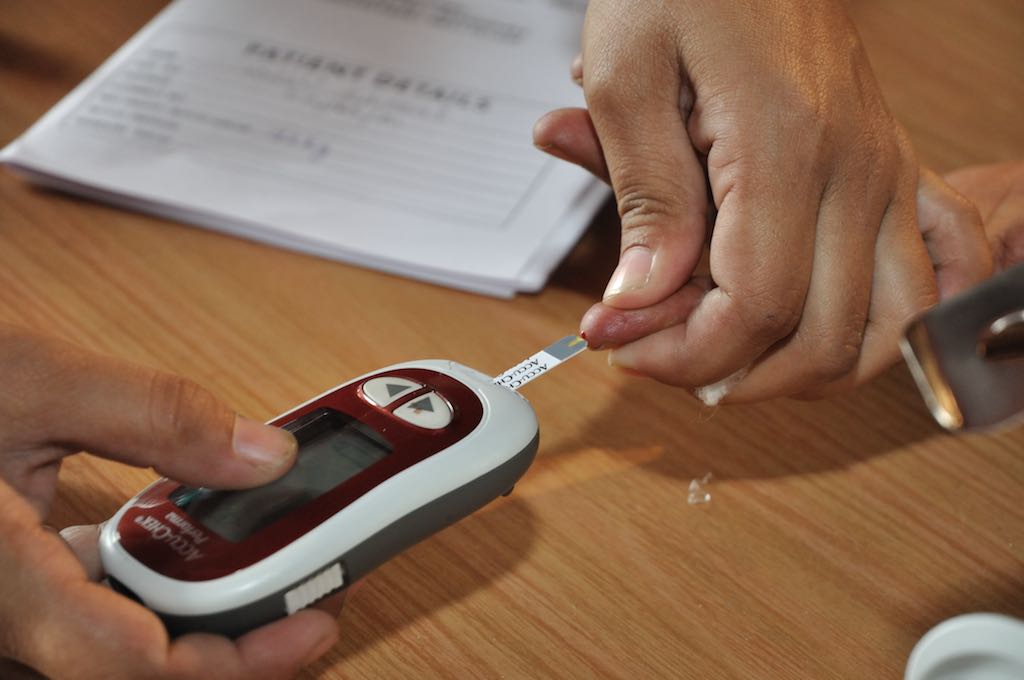Hyperglycemia is the technical term for high blood glucose (blood sugar). High blood glucose happens when the body has too little insulin or when the body can’t use insulin properly.
What Causes Hyperglycemia?
A number of things can cause hyperglycemia:
- If you have type 1, you may not have given yourself enough insulin.
- If you have type 2, your body may have enough insulin, but it is not as effective as it should be.
- You ate more than planned or exercised less than planned.
- You have stress from an illness, such as a cold or flu.
- You have other stress, such as family conflicts or school or dating problems.
- You may have experienced the dawn phenomenon (a surge of hormones that the body produces daily around 4:00 a.m. to 5:00 a.m.).
What are the Symptoms of Hyperglycemia?
The signs and symptoms include the following:
- High blood glucose
- High levels of sugar in the urine
- Frequent urination
- Increased thirst
Part of managing your diabetes is checking your blood glucose often. Ask your doctor how often you should check and what your blood glucose levels should be. Checking your blood and then treating high blood glucose early will help you avoid problems associated with hyperglycemia.
How Do I Treat Hyperglycemia?
You can often lower your blood glucose level by exercising. However, if your blood glucose is above 240 mg/dl, check your urine for ketones. If you have ketones, do not exercise.
Exercising when ketones are present may make your blood glucose level go even higher. You’ll need to work with your doctor to find the safest way for you to lower your blood glucose level.
Cutting down on the amount of food you eat might also help. Work with your dietitian to make changes in your meal plan. If exercise and changes in your diet don’t work, your doctor may change the amount of your medication or insulin or possibly the timing of when you take it.
What if it Goes Untreated?
Hyperglycemia can be a serious problem if you don’t treat it, so it’s important to treat as soon as you detect it. If you fail to treat hyperglycemia, a condition called ketoacidosis (diabetic coma) could occur. Ketoacidosis develops when your body doesn’t have enough insulin. Without insulin, your body can’t use glucose for fuel, so your body breaks down fats to use for energy.
When your body breaks down fats, waste products called ketones are produced. Your body cannot tolerate large amounts of ketones and will try to get rid of them through the urine. Unfortunately, the body cannot release all the ketones and they build up in your blood, which can lead to ketoacidosis.
Ketoacidosis is life-threatening and needs immediate treatment. Symptoms include:
- Shortness of breath
- Breath that smells fruity
- Nausea and vomiting
- Very dry mouth
Talk to your doctor about how to handle this condition.
Medical IDs
Many people with diabetes, particularly those who use insulin, should have a medical ID with them at all times.
In the event of a severe hypoglycemic episode, a car accident, or other emergency, the medical ID can provide critical information about the person’s health status, such as the fact that they have diabetes, whether or not they use insulin, whether they have any allergies, etc. Emergency medical personnel are trained to look for a medical ID when they are caring for someone who can’t speak for themselves.
Medical IDs are usually worn as a bracelet or a necklace. Traditional IDs are etched with basic, key health information about the person, and some IDs now include compact USB drives that can carry a person’s full medical record for use in an emergency.
How Can I Prevent Hyperglycemia?
Your best bet is to practice good diabetes management and learn to detect hyperglycemia so you can treat it early — before it gets worse.
If you’re new to type 2 diabetes, join our free Living With Type 2 Diabetes program to get help and support during your first year.

